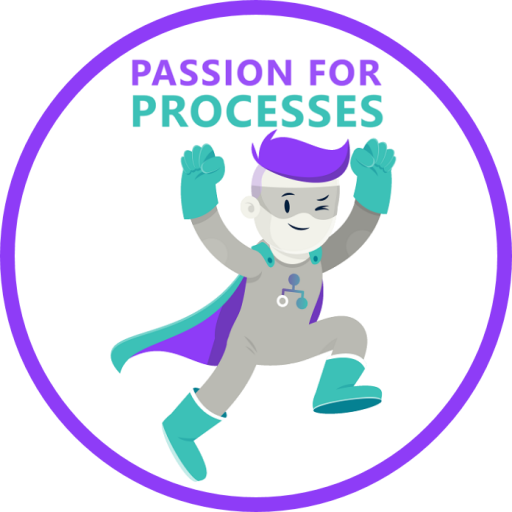
Today, we introduce a new series at ARIS Community: Interviews with BPM experts. As the first one, we are happy and proud to introduce Dr. Christoph F. Strnadl, the colleague that became second at the first German BPM championship!
We are convinced that this interview is more than worth reading – please start a discussion as comments if you like. Especially the point regarding the future of BPM is exciting!
Nina: Good morning Christoph. Please introduce yourself to our community members.
 Christoph: My name is Christoph Strnadl and I am Chief IT Architect at Software AG Austria. You might wonder what a Chief IT architect is. Actually, it is fairly simple: I am collecting requirements which arise at the highest level of the organizational hierarchy that is at the board level and at the business level. I then take those requirements — in many cases you have to elicit them first through appropriate methods — and transform those requirements into technology solutions. Sometimes this is neutral, sometimes and in many cases this is based on our own methodology, webMethods, including our own consulting methodology.
Christoph: My name is Christoph Strnadl and I am Chief IT Architect at Software AG Austria. You might wonder what a Chief IT architect is. Actually, it is fairly simple: I am collecting requirements which arise at the highest level of the organizational hierarchy that is at the board level and at the business level. I then take those requirements — in many cases you have to elicit them first through appropriate methods — and transform those requirements into technology solutions. Sometimes this is neutral, sometimes and in many cases this is based on our own methodology, webMethods, including our own consulting methodology.
After having designed such a blueprint, such a solution, I usually stick with the following implementation project. Maybe this is different to an architect who designs buildings. When you are building a house then in many cases the architect will leave you alone with a plan, with the blueprint, and you are on you own when you have to deal with the constructor. In contrast to that I — in many cases — have to demonstrate that this blueprint, the architecture proposed really works and I remain project manager, program manager, or chief IT architect on many implementation projects as well. This leads me to come up with really realistic architectures.
Nina: Congratulations to your runner-up title at the German BPM championship! What exactly is this championship about?
Christoph: This is not the first championship the three partners held. Last year they had a project management championship. The underlying idea is to offer a forum where practitioners and experts are able to demonstrate in an easy way the breadth and depth of their knowledge. This type of competition is geared towards all kinds of people so it should attract practitioners, academics, experts, and consultants alike. Through a many-level process they are weeding out people who barely know how to spell KPI from those who really have done projects and know a great deal about common technologies.
Nina: Could everybody apply but they choose the real experts?
Christoph: Yes, the first round was open to every interested party and we had about 250 participants for the process management competition. And here comes an interesting fact: There was a project management championship in Germany last year where a colleague, Claus Hüsselmann, was number one. But the project management championship had about 450 participants, so in a certain sense you could say that for every two project managers, there comes one process manager. That seems to be the current relation. The process management championship was open to everyone and in the first round they shortened the field to 200 competitors, then to 100, to 25 and then to 5.
Nina: So, the candidates come from universities, from companies, from all different kinds of areas?
Christoph: Completely open, yes. The only prerequisite was German speaking. There were Swiss colleagues and Austrian colleagues and experts applying and participating as well.
Nina: Who held this championship?
Christoph: Computerwoche was the media partner. They had a scientific sponsor, University of Applied Sciences Koblenz, and they had a funding sponsor which was Metasonic, a small start up, venture capital funded, German company which has a very interesting solution in terms of modeling and executing simple processes.
Nina: What would be a good sample question you had to answer so our members may be able to make a guess on their own?
Christoph: In the first round it was typically about acronyms, so what does KPI (Key Performance Indicator) stand for, what goes behind the concept of BAM (Business Activity Monitoring) and the questions were also brought in from IT-related fields. For example: which of the following attributes/conditions is true for IT outsourcing – and then they presented some short characterizations of outsourcing.
Questions were always framed in the form of radio buttons or checkboxes, where you had to choose either one of three or four correct answers or you had to choose all the correct answers. Another example was: What are the principles of Lean Management(You hopefully remember the 7 wastes?)and theyoffered a choice of four and only three of them were really lean ways: reducing inventory, reducing movement, avoiding transport, and reducing people. Now: reducing people is not part of the lean concept. So you had to really know what the concepts mean and how they would translate into a slightly different wording. It was not enough to have learned the acronyms by heart: Without a sufficient understanding you wouldn´t recognize the meaning behind the questions.
In later rounds it really got more technical. They asked: What of the following could you do with a BPEL (Business Process Execution Language) process: you can run it on a workflow engine, you can print it, you can measure it, something like that.
Nina: Would it make sense to include such a contest in academic education?
Christoph: I fear that universities at this point of time are already overloaded with multiple choice tests. But I think it´s much harder to have students reproducethe meanings and the definitions of a concept in their own language, because this is what they are judged and asked for in real life, e.g., when they are conducting a workshop or are asked by customers. In an actual workshop no one presents to you five possibilities and you don´t have the luxury to know that exactly one out of five options given to you is correct. You don´t even know that there are five options at all. You have to come up with the solution on your own. I would rather want academia to let students explain concepts by themselves, in their own language than have them select a few pre-formulated choices.
Nina: The competition was only in the German speaking area; so would you say that BPM is more a German topic or would it make sense to also have this kind of competition European or even worldwide?
Christoph: That BPM is just a German topic is definitely false. I mean the US has been re-inventingBPM in the 1990s and it has always been one of the really great topics which they did pursue all along. BPM in no way is just a German topic. In that sense it would make be reasonable to have such a championship on a global level.
However, the BPM community has been and currently is working on a body of knowledge and that would be a prerequisite to having a worldwide contest. Otherwise much confusion concerning language and terms would come up in such a competition, for instance: What is the difference between a process owner and a process manager? The English speaking countries usually equate one with the other, usually, not always. But this is changing slowly in the US but it has a much more advanced interpretation in the German speaking and the European countries because there is a clear separation between a process owner and a process manager in terms of responsibilities and expectations. A true prerequisite to conducting a BPM Championship on a multinational and international level would be to have such a body of knowledge for process management. There exists one (BPM CBOK) by the ABPMP and EABPM, one year old, but it is work in progress and not completed yet.
Nina: If this championship would have taken place 5 years ago, would the questions have been similar or has the topic BPM fundamentally changed in the last years?
Christoph: I think the questions would not have been similar, they wouldn´t have asked so many technology-related questions. They asked about outsourcing, and they asked about BPMN 2.0 which is definitely expanding its reach, gaining momentum and is running up to EPCs. There were also a lot of questions related to the principles of Service Oriented Architecture (SOA), which was still in its infancy five years ago. I mean the Web Services standards were born I think 2003, 2004 around that time frame. So the technology is much more mature today and this is reflected in the questions.
Nina: In your opinion, what are the future trends of BPM?
Christoph: I think there are two. One is that the technology by now is very mature and very advanced. Actually many of the companies out there still need to catch up with what is already available and achievable with today´s technology. So we are selling this type of technology, we see that for many new projects people are employing workflow management systems, business process management systems, and rules management systems. So, the level of technology support you can get for business process management is more advanced than what enterprises are currently using. Hence, one part of the game is to have enterprises catching up with what is achievable with current or past state of the art technologies.
The second trend we see has its roots in the short-comings of current process engines. Evidently, they need firm pre-structured processes. If you apply for a loan, or you look at backend processes in insurance (e.g., claims processing), those processes are very structured so you can put those definitions hardwired into a process engine. However, many of our little processes where knowledge workersare engaged are much more fluid, they are not so rigidlystructured in such a way which is needed for process engines. This type of processes is softer, more ad hoc, more semi- or unstructured and somehow technology and the way how we are dealing with these kinds of processes will change.
Technology-wisewe already have an acronym for supporting this type of semi- or unstructured processes and unfortunately it is not “BPM 3.0” which Prof. Scheer in 2009 tried to shape for social BPM. The acronym I am talking about has been invented in 2006 by Harvard Business School and it is called Enterprise 2.0. There you have Web 2.0 applications such as wikis, blogs, tweets, and newsgroups which are targeted to support enterprise internal goals and projects (as opposed to the general public) and that includes supporting unstructured processes. So what Software AG is calling social BPM and the academics are calling Enterprise 2.0, I see that these kinds of initiatives are gaining much traction and momentum in those areas where the processes cannot be structured. I´m a project manager and architect myself. My own work cannot ever be supported by a process engine. I mean it wouldn´t make sense. What would you put into a process engine? You have a beginning then you have a middle step where you are creatively thinking, and then you have a review phase? I absolutely fail to see any means how that would be supported by a standard process engine. However, if I would be supported by a wiki…
Actually Software AG is using a wiki and a shared repository and a blog for our projects. But there are different types of technology which should be used for different types of processes. We see this kind of differentiation gaining momentum (e.g., think of Case Management).
Nina: Thanks a lot Christoph – this was very interesting and we are sure our members will appreciate this open and detailed information.










